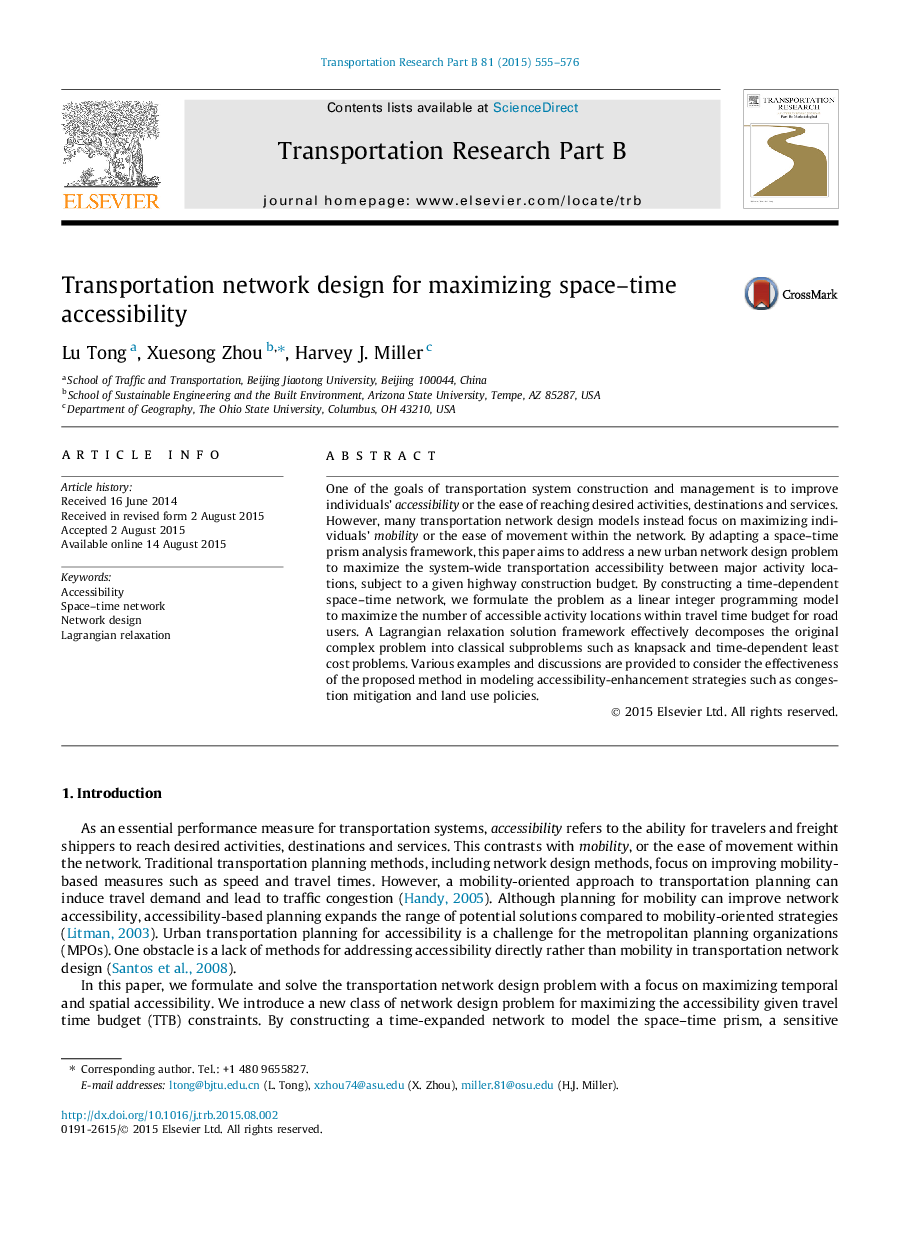| Article ID | Journal | Published Year | Pages | File Type |
|---|---|---|---|---|
| 1131700 | Transportation Research Part B: Methodological | 2015 | 22 Pages |
•Develop a urban network design problem to maximize system-wide transportation accessibility.•Construct a time-dependent space–time network to formulate the problem.•Maximize number of accessible activity locations in space–time network within travel time budget.•Use Lagrangian decomposition to construct knapsack and least cost path subproblems.
One of the goals of transportation system construction and management is to improve individuals’ accessibility or the ease of reaching desired activities, destinations and services. However, many transportation network design models instead focus on maximizing individuals’ mobility or the ease of movement within the network. By adapting a space–time prism analysis framework, this paper aims to address a new urban network design problem to maximize the system-wide transportation accessibility between major activity locations, subject to a given highway construction budget. By constructing a time-dependent space–time network, we formulate the problem as a linear integer programming model to maximize the number of accessible activity locations within travel time budget for road users. A Lagrangian relaxation solution framework effectively decomposes the original complex problem into classical subproblems such as knapsack and time-dependent least cost problems. Various examples and discussions are provided to consider the effectiveness of the proposed method in modeling accessibility-enhancement strategies such as congestion mitigation and land use policies.
Graphical abstractFigure optionsDownload full-size imageDownload as PowerPoint slide
